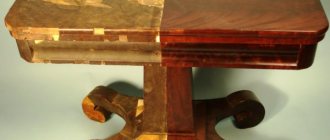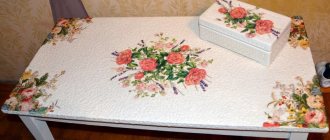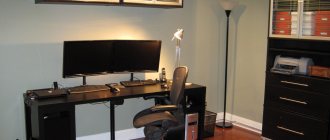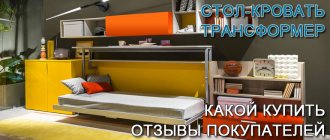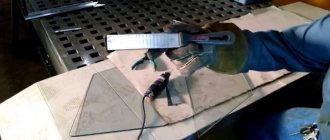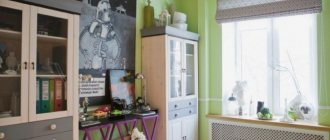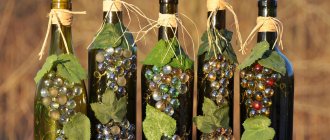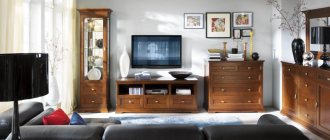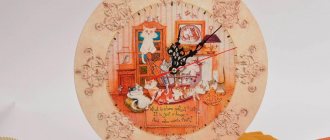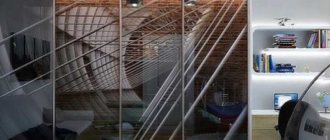The history of decoupage
The use of this decoration technique first began in medieval Europe. This type of decor was used to decorate the facades of furniture in Germany in the 15th century. Great demand for such decoration arose in the 17th century in Italy. Cabinetmakers used paper decor in the form of pictures to decorate inlaid furniture.
The fashion for such products arose after the era of the Great Geographical Discoveries, when furniture products designed in Chinese or Japanese style became popular among the European elite.
Materials and tools
Before starting work, you should master the basic instructions and rules underlying the decoupage technique, become familiar with the set of tools and the features of processing the surface pasted with drawings.
Before starting work you should prepare:
- wooden products whose surface will be decorated;
- paper napkins with suitable images;
- brushes;
- PVA glue;
- clear acrylic varnish and acrylic paints;
- dry wipes;
- primer;
- scissors;
- wood putty.
Advice! Beginners can buy special decoupage kits in craft stores, which contain everything they need for work.
Preparing for work
Before you start working, prepare the necessary tools and materials. Today there are many specialized stores selling the raw materials necessary for this work. It is also possible to collect everything you need at home, first making a list, so as not to be distracted later.
Tools: art brushes, pencil, brush, sponge, water container, files, ruler, scissors, spatula.
Materials: acrylic paint, primer, varnish, sandpaper, PVA glue, putty, laundry soap, napkins, cuttings, templates.
Before making decoupage of the kitchen table with your own hands, you need to thoroughly wash the tabletop with a solution of soapy warm water. It is also advisable to pay attention to greasy stains and be sure to degrease them with an alcohol solution or high-quality dishwashing detergent. Then sand the surface with sandpaper until the countertop is completely smooth. If cracks or holes are found, they must be carefully smoothed using putty. Be sure to wait until the countertop is completely dry and feel free to start working.
Sanding the countertop with sandpaper
Puttying and surface painting
Preparatory stage
Before you start decorating a wooden surface, it should be properly prepared for work. Typically, the decoupage technique is used to restore old wooden surfaces that need to be prepared for work. To do this, the workpiece is cleaned of dirt and dust using damp microfiber.
If there are cracks, irregularities and chips on the wooden surface, they need to be repaired with a special wood putty. Apply the primer to the surface of the wood using a spatula. When the putty dries, the wood needs to be treated with fine sandpaper.
After this, you need to prime the surface, dry it and sand it again. Afterwards, remove the working dust and begin gluing the paper image. If the wooden product that will be decorated using the decoupage technique is old, then the primer should be applied twice. This pre-treatment will make the wooden surface perfectly smooth and allow the paper decor to adhere firmly.
When the blank is prepared, you need to decide on the decor by choosing a suitable thematic image. You can use any napkins with a picture, the main thing is that the picture lies evenly during gluing. The easiest way for a beginner to work is with three-layer paper napkins, which have a certain paper quality.
Varieties of decoupage
There are different decorating techniques. They differ in the method of execution and quality of materials. To ensure that decoupage of an old table does not cause problems, it is necessary to decide on the type of method at a preliminary stage. This will help you avoid common mistakes.
Making an inversion table with your own hands, operating tips
By method of execution
Despite the fact that the general essence of the technique is gluing a certain decor onto the surface, there are nuances in its implementation. Depending on this, decoupage comes in several types. Decorators and restorers identify six methods:
- direct decoupage;
- back;
- volume;
- art;
- deco patch;
- Sospeso Tresparente.
The direct (or classic) method involves applying a paper design directly to the surface of the tabletop. Reverse decoupage is used only for glass tables in the kitchen or living room. The material is glued to the bottom surface of the tabletop, as a result of which it looks like a stained glass window. The volumetric method creates some unevenness on the surface. To achieve a 3D effect, they use fabric with an embossed texture, eggshells, dried flowers and twigs.
With the artistic (or smoky) technique, the pasted pattern is completed and shaded using paints. You can show shadows in the image, make individual elements brighter, and create an emphasis on the main details. Decopatch is somewhat reminiscent of patchwork. The decorative covering is created by using many pieces of paper or fabric that match the style. They are torn by hand to create uneven edges or, conversely, neat shapes are cut out. The most expensive in terms of costs is the Italian technology Sospeso Tresparente. The decor is fixed to thermoplastic, and after drying it takes on a three-dimensional shape.
The nuances of making folding tables of different models with your own hands
Straight
Back
Volume
Art
Decopatch
Sospeso Tresparente
By type of materials used
The sources used for gluing differ in quality. These can be new or used paper products, various types of textiles, and scrap materials. Most often suitable for decoupage:
- Paper napkins. The specimens with beautiful large patterns are of greatest interest. They are carefully cut out and placed on the surface. Decoupage a table with napkins is a common and simple option.
- Paper. For decoration, wallpaper, newspapers, color magazines, photographs, wall posters, and geographical maps are used. Selected objects are also cut with scissors or torn by hand to create a wavy edge.
- Textile. The quality and color of the fabric are at the discretion of the artist. The main thing is that the material is thin. In this case, it is easy to glue it to the table surface and create the effect of an even coating.
- Guipure. This openwork type of fabric is used as a stencil. The tabletop is covered with a single piece of lace and all folds are straightened. Then the surface is covered with aerosol paint, and after drying, the guipure is removed.
- Shell. The material at hand is often used for table edging. Egg shells are crushed and distributed on selected areas of the countertop. If necessary, cover the volumetric parts with paint.
- Leaves. For work, take specimens with pronounced veins or with a complex leaf blade. Before laying out, the elements are ironed.
Some types of decor can be combined, for example, decoupage with fabric and shell looks beautiful.
Paper napkins
Paper
Textile
Guipure
Shell
Leaves
Step-by-step instructions for decoupage techniques
Before starting work, you need to remove the image layer and cut out the necessary pictures for decoration. There is no need to worry about the thin paper tearing. The picture in the glued state will look intact if it is placed correctly on a wooden surface.
Instead of scissors, you can carefully tear out images on a thin colored layer of napkin with your hands. First you need to make at least an approximate sketch to make it easier to lay out the desired decor from paper pictures on the surface of a wooden blank.
After all the pictures from the napkins have been prepared, the paper fragments should be laid out on the item to be decorated to see how the overall pattern being created will look. When the sketch of the future decor takes on a finished form and it is clear where to glue the paper fragments, you can proceed directly to the decopage itself.
Napkins for decoupage: what are they?
If we talk about the popularity of materials for decoupage, then napkins are the undisputed leader. Napkins are the basis of all equipment, which is why it is so important to take into account all the nuances when choosing napkins.
All you need is a top layer with a pattern.
Of course, at the first creative stage, a novice master can use simple serving napkins, but with the help of such napkins it is not always possible to achieve the desired result, because some napkins are too thin and are not of good quality, while others, on the contrary, are too thick. Don’t chase cheap materials; buy special napkins for decoupage in a specialized store.
They differ from dining rooms not only in their bright color and good print quality, but also in their texture and density suitable for decoupage.
Decoupage napkins differ from each other in the number of layers (but only the top layer on which the design is depicted will still be used in the work), size (21X21cm, 25X25cm, 33X33cm, 40X40cm) and shape (square, round, rectangular). Also, the arrangement of motifs can vary from napkin to napkin. There are five main arrangements: four identical motifs, two identical motifs arranged in pairs on the napkin, four different motifs, two different motifs and, finally, one motif occupying the entire area of the napkin.
The surface of the base must be light.
When choosing napkins, you should also pay great attention to their properties.
- Most often, the top working layer of the napkin is very thin and translucent. Working with it can be difficult, but it is thanks to this property that the finished work will resemble a watercolor painting, due to the merging of the picture and the surface.
- The ability of paper to stretch and form wrinkles. To prevent this from happening, you should prepare for decoupage carefully.
- Also, due to the transparency of the napkin, you should be more careful when choosing a color for the background.
When applying varnish, the napkin becomes more transparent, and against a dark background the design will lose its contrast.
Decoupage technique: highlights
The algorithm for this decor is simple:
- glue is applied to the paper fragment with a soft brush;
- the picture is glued to a wooden surface;
- the pasted image is dried;
- Colorless acrylic varnish is applied to the decor created from paper napkins.
Coating the finished work with varnish is the final stage. The varnish is applied in two layers. If desired, using special coatings you can create the effect of a patina or an aged surface on which characteristic cracks appear.
These are the basic principles of decoupage technique. In addition to them, there are special varieties of such decor, which will be described below. Having mastered simple pasting, you can move on to more complex ways of decorating wooden surfaces with images from paper napkins.
Fabric for decoupage
The decoupage technique involves the use of not only paper drawings, but also fabric. This option has the main advantage - the surface retains its brightness even after long-term use.
- Do-it-yourself orchid: master class on making and step-by-step description of creating an artificial flower (video + 105 photos)
- Old-time charm: vintage, retro and antique
Knitted jewelry - the best jewelry ideas and creating knitted jewelry for beginners (110 photos and videos)
Wooden furniture is best suited for decorating with fabric. Its preparation is the same as for napkins. You just need more glue to secure the fabric to the wood.
Decoupage technique of “implanting napkins into wood”
This is a more complex technique, the use of which when decorating wooden products will require additional materials:
- wax;
- cloth for polishing waxed surfaces;
- gas burner for roasting;
- metal brush.
This decoupage technique is performed on the basis of wood brushing - artificial aging of the surface. First, the wooden surface is prepared, which is given an antique look. To do this, the front side of the wood is burned with a torch, then part of the burnt surface is removed and brushing is carried out: processing the wood with a metal brush, which is moved along the wood fibers with light pressure.
This method removes the top layer of soft wood fibers, making the texture of the wood clearer and more prominent. Brushing is similar to scraping wood. This operation should be done carefully, otherwise the wooden workpiece may be damaged.
Pre-firing the wooden surface destroys the soft fibers of the wood and simplifies the brushing process.
After finishing brushing, you need to sand the wood with sandpaper of different grain sizes, having previously treated the surface with stain or varnish. Sanding should also be carried out along the grain of the wood.
After this aging of the wood, wax begins to be rubbed in. When waxing is finished, you need to sand the surface and polish it. Then you can glue the paper pictures by applying glue to them. When the paper decor is completely applied, the surface is dried and coated with acrylic varnish. You can also use the craquelure technique - creating small cracks that imitate an aged paint surface. To do this, you can use a special craquelure varnish.
How to make decoupage from napkins: master class
The main idea of decoupage is to decorate the surface of an object with a pattern or ornament. The process is creative, and, as in any creativity, there are no concepts of “right” or “wrong.”
The main thing in the work is how closely you managed to approach the original idea.
If you want your work to be smooth, without cracks, scuffs, or bubbles, then this step-by-step instructions for beginners will help you avoid such mistakes.
Master class on decorating a cutting board using decoupage technique
After mastering the decopage method, you can try to make your first work. Beginners should choose small items with a flat surface for decoration. A wooden cutting board is best suited for this.
To work you will need to prepare:
- wooden cutting board;
- white primer for wood;
- three-layer paper napkins;
- PVA glue;
- sponges;
- tassels;
- acrylic varnish and acrylic paints.
If the surface of the board is old and dirty, it should be sanded. Then the prepared workpiece is primed and dried. While it dries, select a suitable pattern for decoration. To create an original image, you can combine fragments of drawings from different napkins, creating original thematic pictures.
The white primer layer will be the background for the image. The edges do not need to be covered with pasted images. The glue will be brushed onto the paper image, not onto the wooden surface.
When all the fragments of the image are pasted, you need to let the decor dry, and then cover it with acrylic varnish in several layers. It is optimal to apply 5-8 layers of varnish. Each layer should be thoroughly dried before applying the next one.
Having mastered the decoupage technique, you can transform your living space in your home or country house with your own hands. This decor allows you to give old furniture a spectacular appearance. Using decoupage, you can create original household items that will be an excellent gift for family and friends. Those who are seriously interested in such applied creativity can turn it into a profitable business.
Creating decoupage
Do-it-yourself decoupage of furniture with wallpaper is carried out in the following sequence:
- After preparing the product and completely drying the primer composition (paint), the preparation of the material (in our case, wallpaper) begins. They are adjusted to the size of the product, taking into account allowances on each side, approximately 7 cm.
- Special glue is applied to the work surface and wallpaper. The composition is kept for 5 minutes for impregnation.
- Wallpaper or cut-outs with images are glued onto furniture. It is recommended to use a rubber roller for smoothing. You need to work from the middle to the edges. All movements must be extremely careful, since glue-impregnated paper is easily torn.
- Everything dries well.
- Excess material is cut off and the edges are sanded using sandpaper.
- A layer of acrylic varnish is applied over the decorative coating. Drying.
Interesting! To further decorate the surface of old furniture, you can use all kinds of elements - foil, book pages, glitter, favorite photos, feathers, dried flowers, lace and ribbons.
